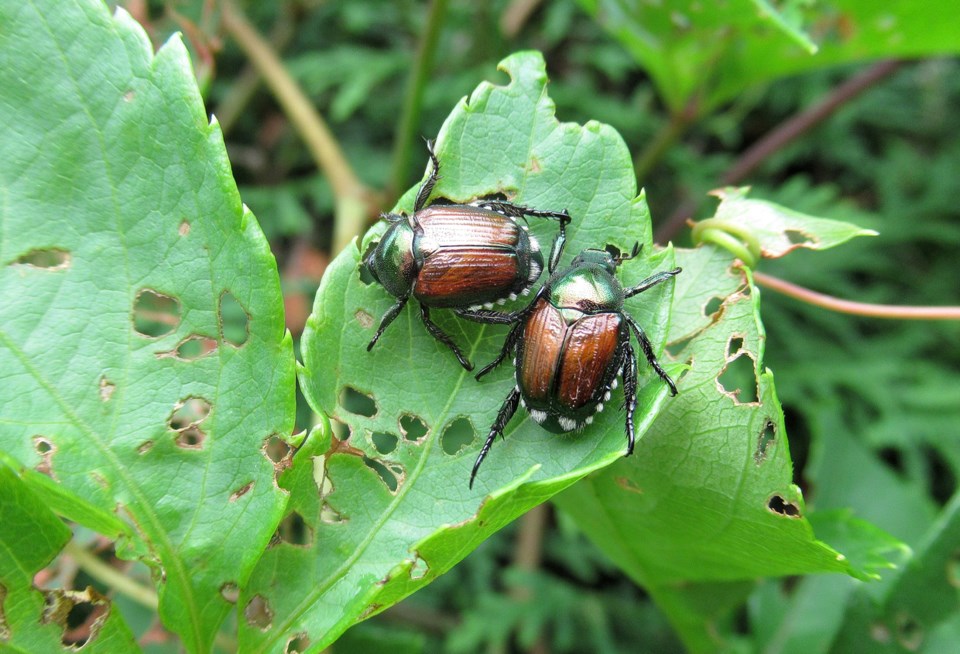Vancouverites between the ages of 15 and 30 are invited to participate in the “Healthier Habitats” project. The Invasive Species Council of B.C. initiative aims to reduce the proliferation of some of the most problematic plants and animals in the province.
An invasive species can be any kind of living organism — fauna or flora — that is not native to an ecosystem and, lacking any natural predators, unbalances the new ecosystem. Prominent invasive species in Vancouver include giant hogweed, which produces sap that is toxic to humans, and the Japanese beetle, which has become a major concern after a single beetle was discovered in David Lam Park in 2017.
Beginning in 2019, three Health Habitats projects have successfully been set up: one in the Lower Mainland, another in Kamloops and a third in Williams Lake. Participants in this project are trained by the ISCBC to identify and deal with invasive species but, by and large, organize their own activities.
“Each group is choosing what they want to work on and how to get involved. We’re always looking for more youth,” said Gail Wallin, the executive director of the Invasive Species Council of B.C.
“Some of them might not be an outdoors person, or they can’t go outdoors because of some limitation, but then there’s other things that they can do — say, if you want to be involved in creating a video explaining to people why invasive species are important.”
Wallin insists a large part of fighting invasive species needs to be human-focused.
“Most of our invasive species are actually introduced by people,” Wallin said.
Whether it’s fish bait being dumped into lakes or mountain bikers carrying seeds in the dirt of their bikes, most of the time this transfer of invaders into new habitats happens at the hands of an unwitting person. That’s why so many projects focus on educating specific groups of people, such as gardeners or boat enthusiasts.
The main focus of the projects is to help remind people that they “can make a big difference through small actions,” said Wallin.
Tasha Murray, executive director of the Invasive Species Council of Metro Vancouver, held her second annual “invasive species cook-off” earlier this summer.
Dishes included knotweed and onion quiche, garlic mustard pesto scones, wild boar sausage and an assortment of blackberry-flavoured desserts.
“We had about 30 people come, and we had dishes that were made from invasive species or inspired by invasive species,” Murray told the Courier. “One of our main proteins was wild boar sausages, and so we made that into risotto and barbeque skewers. I’m not a big meat-eater, but it was delicious.”
This kind of strategy feeds into a relatively new way of combating invasive species, said Murray: cultural control, which aims to change human behaviour. It includes other strategies, such as changing land use, re-utilizing invasive species for art projects and altering crop rotation methods. While still not very common, it is a less destructive form of population control than manual control (think shovels) and chemical control.
Another relatively new form of control is bio control, which involves the introduction of certain predators to keep invasive numbers down. But according to Murray, it takes a long time to approve and careful consideration has to be undertaken before introducing yet another non-indigenous species into the ecosystem.
These population control projects still face several challenges, particularly convincing people to care, says Murray. While it’s easy to get behind the eradication of toxic weeds, people tend to have a different reaction to cute little mammals such as the eastern grey squirrel, an invasive species ranked by the Invasive Species Specialist Group (ISSG) as one of the top 100 invasive species in the world.
“One of the challenges when dealing with what we call megafauna — animals and cute cuddly things and things that might be harder to track or kill — I think public perception is ‘who cares if they’re invasive?’” Murray said.
A big part of getting the public to care involves educating them on the effects and costs of invasive species — on not only other animals but humans as well. With this knowledge, Wallin and Murray hope that the next generation of Vancouverites will become better stewards of the nature that surrounds them.
“There’s a real opportunity for our young people to make a difference,” Wallin said. “Get involved.”
For more information, go to bcinvasives.ca.



